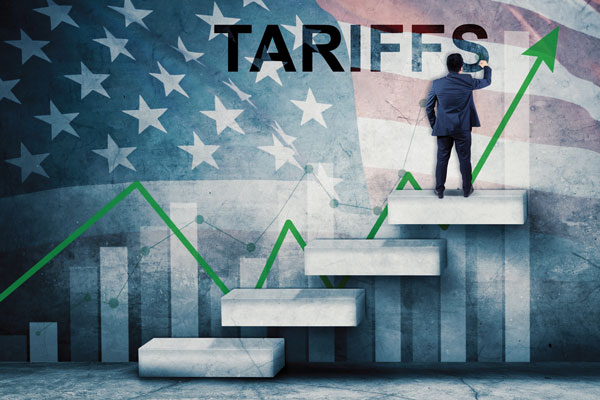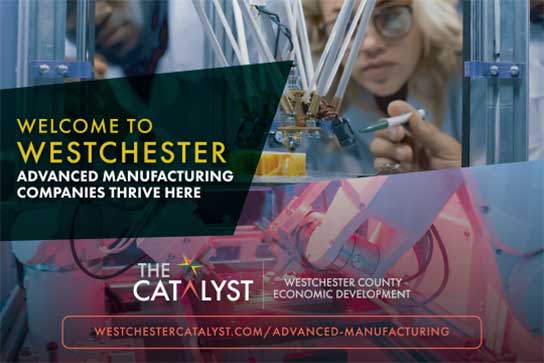How New Tariffs on
Mexico, Canada, and China
Could Reshape U.S. Manufacturers
The first 100 days for any president are typically the most crucial. This timeframe is closely observed to see which campaign trail initiatives start to take shape. One of the policies that manufacturing and distribution business owners are closely monitoring is President Donald Trump’s position on tariffs, primarily related to Mexico, Canada and China.
The president did not waste any time moving forward with his tariff initiative at the beginning of his term. In early March 2025, President Trump announced tariffs for both Mexico and Canada. Soon after, Trump postponed the 25% tariff on most goods from Mexico for at least another month. Even with the off-again, on-again implementation of these tariffs, manufacturing and distribution businesses must have a plan in place, lest these tariffs are here for good.
With trade policies shifting, manufacturers and business leaders must assess how these tariffs could reshape supply chains, costs, and profitability in the near future.
The Economic Impact of U.S. Tariff Increases
In 2024, the United States imported $377 billion worth of products from Canada, including mineral fuels, oil, vehicles, machinery and plastics. Meanwhile, the U.S. imported $466 billion worth of goods from Mexico, including cars, computers, crude petroleum and motor vehicle parts and accessories.
Imposing tariffs strains the United States-Mexico-Canada Agreement (USMCA), which replaced NAFTA and aims to promote free trade between the three nations, but would help rebalance the scales of trade with the United States.
The impact on manufacturers, distributors, logistics companies and consumers could be felt almost immediately. This tariff would logically lead to higher prices for goods. Higher prices reduce disposable income, making consumers more cautious spenders, which could affect corporate sales.
On the contrary, if actions are taken to prevent inflation further and refrain from passing off the costs to the end user customer, costs throughout the supply chain would be absorbed, impacting corporate profitability. Ultimately, manufacturers and distributors will most likely be immediately impacted regarding overall profitability, whether reduced sales or increased absorbed costs.

During his first term, the president did not mince words when he wanted to divest the U.S.’s dependence on China, not only in an attempt to bring manufacturing back to the United States but also to improve the grave trade imbalance.
China is one of the U.S.’ major suppliers of advanced technology products like semiconductors, solar cells, lithium-ion batteries and parts, alongside other textiles, machinery, toys, etc.
Currently, the U.S. imposes a 50% tariff on many Chinese products. President Trump has signed an order to raise this tariff by an additional 10%, bringing the total to 60% on these products. While he also promised to reduce interest rates during his campaign, imposing this tariff would likely prevent the Federal Reserve from lowering rates.
“If we get 60% tariffs on Chinese goods, the [Federal Reserve] will not reduce interest rates in 2025,” says Dr. Anirban Basu, Chairman and CEO of Sage Policy Group, Inc. Sustained interest rates would likely result in higher borrowing costs for businesses that need loans to alter their supply chains, stockpile goods or purchase new equipment.
Similar to Mexico and Canada tariffs, the tariff increase on China would raise costs for manufacturers and distributors. Importing raw materials at higher prices would drive up production costs, straining finances throughout the supply chain.
As opposed to being a negotiating tactic like those with Mexico and Canada, many believe China tariffs are meant to be punitive and will not be subject to the same leniencies.
Beyond higher costs from multiple border crossings, tariffs will slow shipments due to additional customs inspections, paperwork, etc. Many businesses, as well as automakers, use just-in-time manufacturing, and minor delays can disrupt production. The automotive manufacturing sector, as well as companies who manufacture the parts that go into these vehicles, will also be hit the hardest from tariffs on imports. Repair costs can rise as automotive parts become more expensive. Many dealership repair shops import parts from Mexico, Canada, and China, especially European and Asian vehicles. Tariffs will increase the cost of these parts, leading companies to charge higher prices for repairs.
There is the additional opportunity for domestically produced parts to be affected. U.S. manufacturers often import steel and aluminum for production, and tariffs on these materials will increase manufacturing costs, making American-made components more expensive. In early March, President Trump increased the tariffs on aluminum and steel an additional 25%, in response to Canada adding a surcharge of 25% to electricity provided to certain U.S. states. This trade war can be unpredictable as the laws regarding tariffs are consistently fluctuating.
How Manufacturers Can Prepare for Potential Tariff Increases
While many professionals believe President Trump’s threats are a tactic to pressure trading partners into making concessions, as shown by the temporary halting of the tariff enforcement with Mexico to April 2025, business owners need to prepare a contingency plan to prevent disruptions in their operations due to the new tariffs.
We are all watching events carefully. “A lot of firms are in a wait-and-see mode for now until the policies actually get enacted,” says Harper Garret, Director, Transaction Advisory Services at Citrin Cooperman.
However, we firmly believe this should be a call to action for companies to continuously evaluate their foreign trade exposure and look to not only diversify but also plan to mitigate and remediate on a more consistent basis. Whether it be improved demand planning, exploring foreign trade zones, tariff engineering or HTS alterations, companies should be taking a more proactive approach. Our Manufacturing and Distribution Industry Practice is here to provide recommendations on how to act or specific guidance tailored to your business and industry. To discuss the current tariff landscape for manufacturers, please contact your Citrin Cooperman representative.
“Citrin Cooperman” is the brand name under which Citrin Cooperman Advisors LLC and Citrin Cooperman & Company, LLP, independently owned entities, provide professional services in an alternative practice structure in accordance with applicable professional standards.







